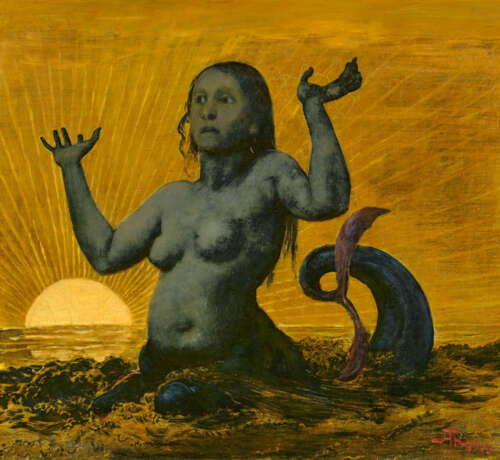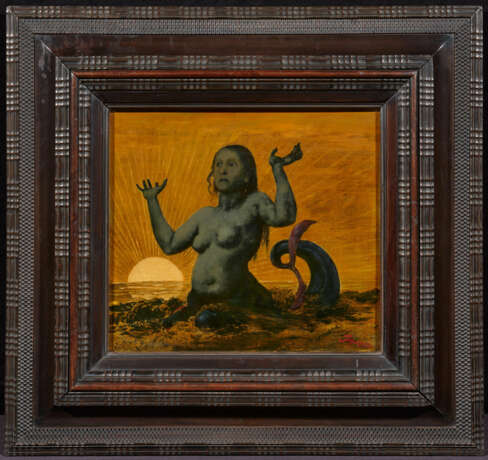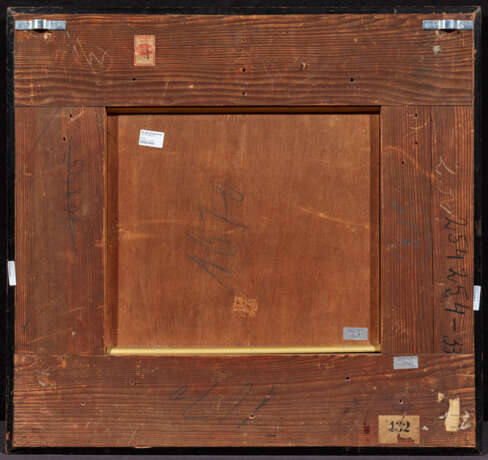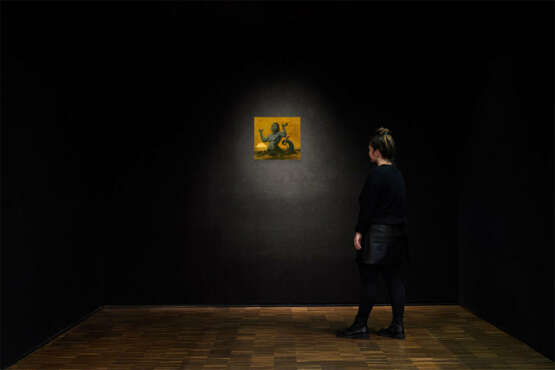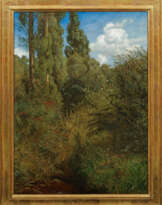ID 1319926
Lot 1359 | Hans Thoma. Awakening of the Sea
Valeur estimée
€ 7 000 – 10 000
1839 Bernau - 1924 Karlsruhe
Title:
"Awakening of the Sea".
Date:
1913.
Technique:
Oil on metal plate.
Measurement:
40.5 x 45cm.
Notation:
Monogrammed and dated lower right: "HTh (ligated) 1913".
Frame:
Framed.
2024 restituted by the Deutsches Museum, Munich, to the heirs of Sigmund Waldes, sale on behalf of the heirs.
Documented at Lost Art under the ID 518644.
Provenance:
Restituted by the Deutsches Museum to the heirs of Sigmund Waldes in 2024;
Sale on behalf of the inheritors;
Heirs as a donation in 1995 to the Deutsches Museum, Munich;
Max Bühler Collection, Pforzheim;
Auktionshaus W. Lange, Berlin, 16th-17th April 1943, lot 231;
Sigmund Waldes Collection, Dresden, until 1939.
Coming from a modest background, Hans Thoma initially begins an apprenticeship as a lithographer before being admitted to the art school in Karlsruhe in 1859. There he studies under Wilhelm Schirmer, among others, who is shaping landscape painting at the time. Thoma is initially unsuccessful with his paintings but refuses to adapt his art to the public's taste. He wants to paint what he sees and is encouraged in this endeavour when he becomes acquainted with the art revolutionaries Courbet and the Barbizon School in Paris.
However, Thoma does not stay in Paris. He moves to Munich and continues to paint in his own style. He ist still not well received by the art market and the general public. Yet, he finds himself in the best of company with his 'being different'. Fellow artists encourage him. Wilhelm Leibl and Arnold Böcklin are part of his Munich circle. With occasional sales, portrait and copying commissions, the artist manages to get by financially. Thoma's situation changes for the better in 1873 when he meets the Frankfurt physician Dr Eiser, who is enthusiastic about his painting and secures him commissions.
In 1878, Hans Thoma moves to Frankfurt, where he attracts attention, commissions, and recognition. An exhibition at the Munich Kunstverein in 1890 cements his fame and, in 1899, he is appointed professor at the art school in Karlsruhe, his own former training centre. At the same time, he holds the position of director of the Karlsruhe Kunsthalle and is appointed a member of the Baden state parliament in 1905. According to Mayer's 1909 Konversations-Lexikon, Hans Thoma is "the Germans' favourite artist". The artist remains director of the Karlsruhe Kunsthalle until 1920.
Hans Thomas' work is initially characterised by realism and he mainly paints landscapes. From his Frankfurt period onwards, the artist's work shows an increased focus on symbolist, mythological themes, which also characterise the art of his friend Arnold Böcklin.
In a close-up view and very directly, the figure of a seawoman appears to be emerging from the rippling waves in front of a radiant sunrise. Against the golden-yellow background with its graphic sunbeams, the naked female body with its fish tail, which is shaded in grey-green and appears like a grisaille, stands out in delightful contrast. Only the tail fin emerging from the water and the whitecaps directly in front of the figure have been given red tones by the artist. In an oratorical gesture, the creature has raised its arms and welcomes the new day. Strictly speaking, this is a female triton, an ichthyocentaur, as the human torso has the front legs of a horse as well as the tail of a fish.
This particular sea creature in front of the rising sun was painted several times by Hans Thoma. Today, three further versions are known, some in different colours: a first version on cardboard was created in 1892, the whereabouts of which are unknown today. The position of the arms is different in this figure. It is probably related to the larger painting 'Sea Awakening' in the Kunsthalle Karlsruhe, also painted on cardboard and dated 1893. Here, however, the triton is shown in an orator posture against a blue background with golden rays. The Hans-Thoma-Museum in Bernau holds another version, which is dated 1912 and is naturalistic in style. Here, Thoma dispensed with the graphic sky design and chose a completely different lighting. This painting, like the present one, is painted on a metal plate.
The present work, which has been part of the collection of the Deutsche Museum in Munich since 1995 and is now being offered as part of a restitution, is an iconic example of Hans Thomas' exciting artistic development between Symbolism and Art Nouveau.
The Deutsches Museum München has published a detailed blog post on the restitution of the present painting, which can be accessed via this link
| Artiste: | Hans Thoma (1839 - 1924) |
|---|---|
| Technique appliquée: | Huile |
| Catégorie maison de vente aux enchères: | Peintures de maîtres récents |
| Artiste: | Hans Thoma (1839 - 1924) |
|---|---|
| Technique appliquée: | Huile |
| Catégorie maison de vente aux enchères: | Peintures de maîtres récents |
| Adresse de l'enchère |
VAN HAM Kunstauktionen GmbH Hitzelerstr. 2 50968 Köln Allemagne | ||||||||||||||
|---|---|---|---|---|---|---|---|---|---|---|---|---|---|---|---|
| Aperçu | |||||||||||||||
| Téléphone | +49 221 92586215 | ||||||||||||||
| Fax | +49 221 92 58 62 4 | ||||||||||||||
| Commission | 32% | ||||||||||||||
| Conditions d'utilisation | Conditions d'utilisation | ||||||||||||||
| Heures d'ouverture | Heures d'ouverture
|
